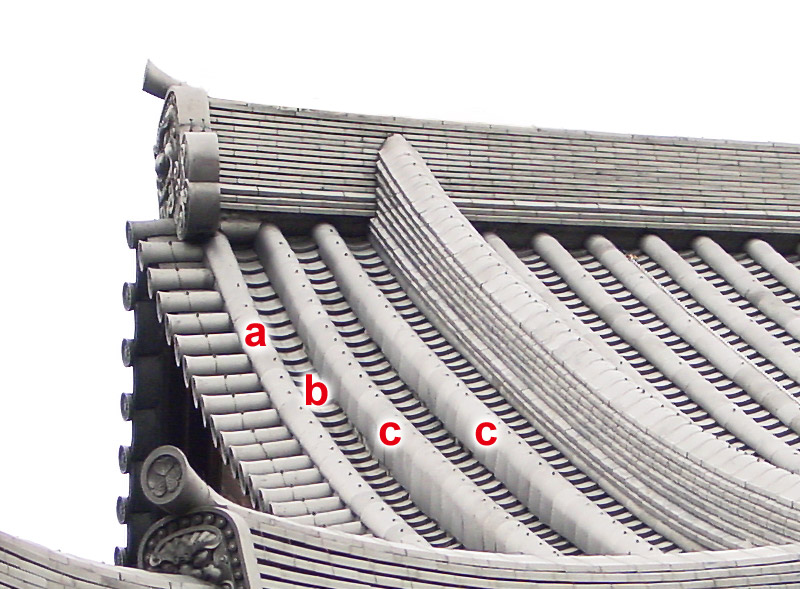| Also
sodegawara ³’; *tonemarugawara
ͺΫ’; tonegawara ͺ’. Lit. cylindrical sleeve tile. A sleeve tile
used the rear of the hanging tile@*kakegawara
|’ that is laid on a barge course *keraba
ε±H, drooping verge *minokou
₯b of a Japanese shrine or temple building. One side of the tile is longer
than the other to compensate for the difference between the curve of the
roof and the curve of the barge course. The tile also closes the gap that
would otherwise exist, if ordinary semi-cylindrical tiles *marugawara
Ϋ’ were used. It is not clear when the definitive shape for sleeve tiles
evolved. Even at Himejijou PHι, in Hyougo prefecture (17c), true sleeve
tiles are not used. Instead one semi-cylindrical tile and a part of another
*dakimarugawara
ψΫ’ are joined to bridge the gap created by the change in level between
the first concave roof tile *tonehiragawara
ͺ½’ and the second concave tile *hiragawara
½’. However, there is no doubt that sleeve tiles were in common use during
the Edo period (1615-1868). |



